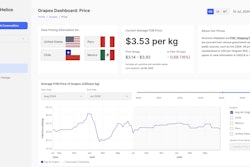
This summer has featured a wide range of weather extremes – devastating floods in the United States, periods of extreme heat and drought in Europe, and variable weather in East Asia. The extreme weather has caused a wide range of impacts in the agricultural sector.
For instance, in the United States, flooding in south-central Texas, New Mexico, parts of the Mid-Atlantic, and to a lesser extent, New York City, have been devastating. However, for large-scale agricultural production, the wet conditions this summer have been beneficial for crop development, according to data released by Everstream Analytics.
This is especially the case in the Midwest corn and soybean belt, one of the most concentrated and highest producing agricultural belts in the world.
Key takeaways:
· Soil moisture conditions averaged out across the Midwest for every week through the end of July. The wet conditions this summer have caused soil moisture reserves to improve and currently, the soil moisture index in the Midwest is the fourth highest (most abundant) since 2003. Abundant rains are highly favorable for overall crop development in the middle of summer. This, of course, is not the case in spring (planting delays) or fall (harvest delays). Looking ahead to August, there is no sign of any yield threatening weather in the major summer agricultural crop belts in the nation’s breadbasket. Thus, the primary summer crops in the United States (corn, soybeans, cotton) are going to be high yielding and “big” crops this year.
· Europe has been the problem zone this summer. Periods of extreme heat and dryness during the spring and summer across much of the Continent have stressed the summer crops across most areas of Europe. As a result, crop stress has been moderate to severe at various times during the past few months. Soil moisture this year has been in the lower end of the distribution in comparison to the past 22 years. In June and early July, soil moisture was the lowest/worst since 2003. Increased rains the past few weeks and cooler temperatures have caused soil moisture levels to increase some; the current soil moisture level is the fourth lowest in the historical record.
· Heat across Europe has compounded the issues, severely stressing crops and livestock. The late June/early July heatwave is blamed for over 2,300 deaths in the major cities in Europe.
· The situation in East Asia is highly variable. Much of the more southern agricultural belts (southern China, Southeast Asia Peninsula, and India) have received abundant rains with moderate temperatures. Crop prospects in those areas are generally favorable. The country also broke its all-time highest temperature of 41.2°C (106°F) in late July. The variable weather conditions this summer will produce variable crop output in East Asia. In other words, the result will be very crop specific. Crops in the more northern areas will likely have negative issues while crops in the southern zones will generally have favorable yields.


















